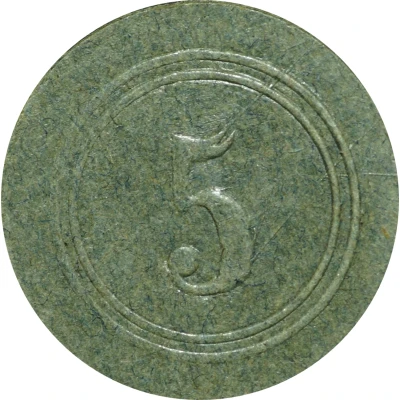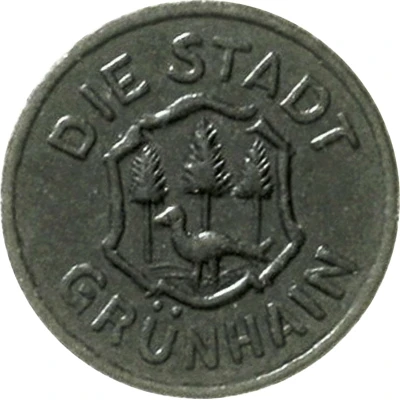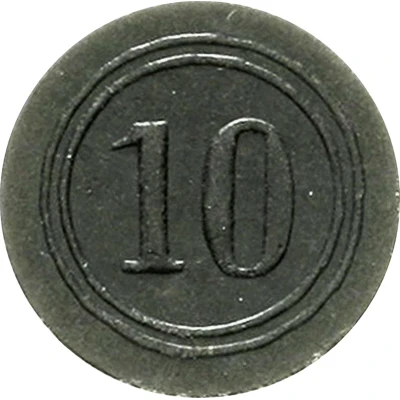


10 Pfennigs - Grünhain ND
1916 year| Cardboard | 0.6 g | 21.2 mm |
| Issuer | City of Grünhain (Federal state of Saxony) |
|---|---|
| Emperor | William II (Wilhelm II) (1888-1918) |
| Type | Standard circulation coin |
| Year | 1916 |
| Value | 10 Pfennigs (10 Pfennige) (0.10) |
| Currency | Mark (1914-1924) |
| Composition | Cardboard |
| Weight | 0.6 g |
| Diameter | 21.2 mm |
| Thickness | 1.4 mm |
| Shape | Round |
| Orientation | Medal alignment ↑↑ |
| Demonetized | Yes |
| Updated | 2024-10-04 |
| Numista | N#298587 |
|---|---|
| Rarity index | 92% |
Reverse
Two solid line circles surrounding denomination
Script: Latin
Lettering: 10
Edge
Plain
Interesting fact
One interesting fact about the 10 Pfennigs - Grünhain ND (1916) coin is that it was made of cardboard, which is a unique and unusual material for coins. Most coins are made of metals like copper, silver, or gold, but this coin was made of a lightweight, durable, and affordable material that was commonly used in the early 20th century for token coins. This choice of material reflects the economic and historical context of the time, when many countries were experiencing metal shortages and were looking for alternative materials to use for their currency.



